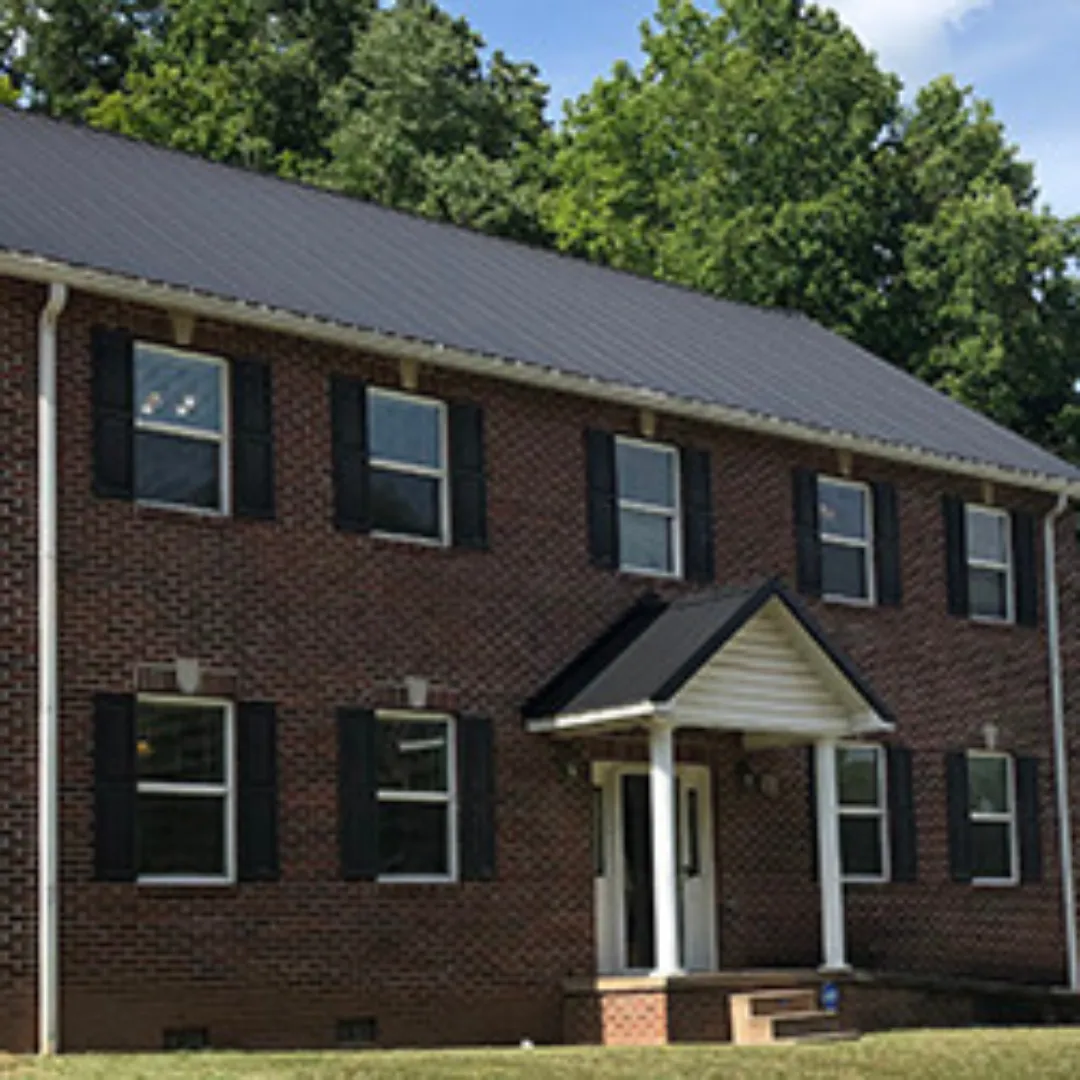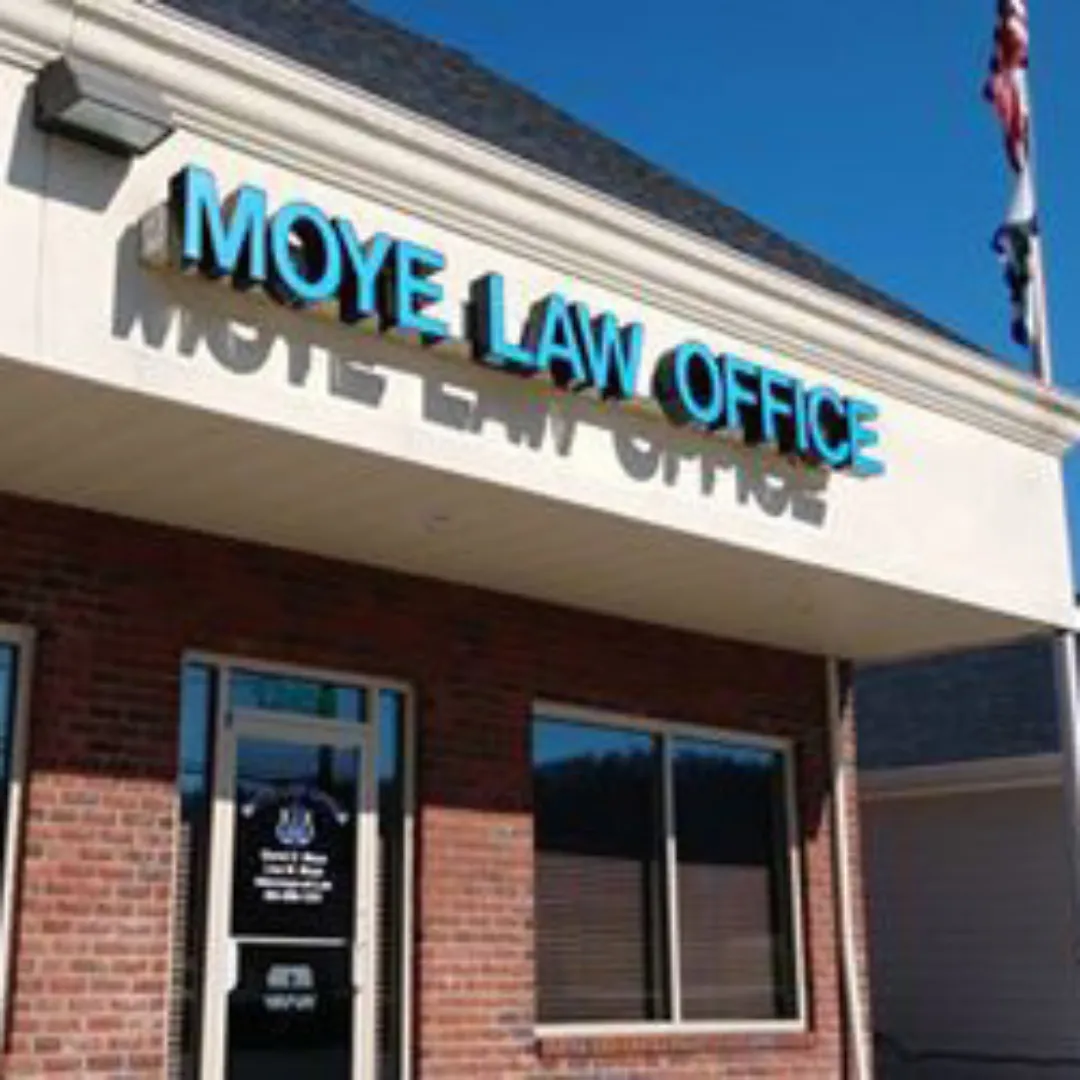Blog
Blog

Navigating Commercial Property Leasing Agreements with Ease
Comprehensive Guide to Commercial Property Leasing Agreements: Key Terms, Types, Tenant Rights, and Negotiation Strategies
Leasing commercial property—whether for office, retail, industrial, or mixed-use purposes—requires more than just reviewing square footage and rental rates. A well-structured commercial lease agreement defines the entire business relationship between landlord and tenant, outlining legal rights, responsibilities, and protections for both parties.
This guide covers the essential elements of commercial leases, common lease types, tenant rights, negotiation strategies, and legal considerations to help you navigate leasing with confidence and clarity.
What Are the Essential Commercial Lease Terms Every Tenant and Landlord Should Know?
Key commercial lease terms include:
Base rent and rent escalations
Lease duration and renewal options
Use clauses and permitted business operations
Repair and maintenance responsibilities
Insurance and liability provisions
Default clauses and remedies
Assignment and subletting rights
Understanding these core terms helps prevent disputes and supports successful lease management.
What Does Rent and Payment Terms Include in a Commercial Lease?
Payment terms typically include:
Monthly base rent
Annual rent increases (percentage-based or CPI-tied)
CAM (Common Area Maintenance) charges
Utilities and property tax contributions
Penalties for late payments or returned checks
Leases should clearly specify how rent is calculated and when it’s due.
How Is Lease Duration and Renewal Defined in Commercial Agreements?
Lease terms often run 3 to 10 years, with options to renew. Agreements should address:
Fixed vs. rolling renewal options
Notice requirements for renewal or termination
Automatic renewal clauses
Negotiated rent increases for renewal periods
What Are Use Clauses and Permitted Uses in Commercial Leases?
Use clauses define what types of business activities are allowed on the property. They help:
Prevent conflicting tenant uses (e.g., restaurant next to a spa)
Ensure compliance with zoning laws
Clarify limits on signage, inventory, or operations
Who Is Responsible for Maintenance and Repairs in Commercial Leases?
Maintenance obligations vary by lease type:
Landlords often handle structural repairs, roof, HVAC, and common areas.
Tenants are usually responsible for interior maintenance, janitorial, and wear and tear.
Clarifying responsibility prevents confusion and budgeting surprises.
What Insurance and Liability Terms Are Common in Commercial Leases?
Common requirements include:
Tenant’s general liability insurance
Property damage and business interruption insurance
Landlord’s building insurance
Indemnification clauses protecting one party from the other’s negligence
Ensure you understand liability exposure before signing.
What Are the Different Types of Commercial Leases and How Do They Compare?
1. Gross Lease
Tenant pays a flat rent amount
Landlord covers property taxes, insurance, and maintenance
2. Net Lease (Single, Double, Triple Net)
Tenant pays base rent plus some or all property expenses
Triple net (NNN) leases are common for retail and standalone properties
3. Percentage Lease
Tenant pays base rent + a percentage of monthly sales
Common in malls and retail centers
4. Ground Lease
Long-term lease of land only
Tenant constructs and owns the building
Often used in corporate, industrial, or development scenarios
What Tenant Rights Are Protected in Commercial Property Leasing Agreements?
Tenants have key rights, including:
Right to Quiet Enjoyment
The legal right to use the leased premises without interference
Right to Habitable Premises
Commercial tenants are entitled to safe, legally compliant spaces, though “habitability” is interpreted more narrowly than in residential leases
Right to Privacy
While not as broad as in residential leases, commercial tenants may limit landlord access to business areas except in emergencies or with notice
How Can You Effectively Negotiate Commercial Lease Agreements?
Negotiation Strategies:
Compare lease types and costs
Request caps on CAM fees and property tax escalations
Negotiate rent-free buildout or early termination options
Understand local market standards and commercial real estate trends
Consult a real estate lawyer for legal review and custom clauses
What Are the Best Strategies for Negotiating Rent in Commercial Leases?
Base rent discounts for longer lease terms
Rent abatement during property improvement periods
Rent escalations based on CPI vs. fixed amounts
Performance-based rent for retail businesses
How Do You Negotiate Key Lease Clauses to Protect Your Interests?
Include a “go dark” clause to allow temporary business closure
Define who pays for code compliance or major system upgrades
Clarify conditions for early termination or subletting
Negotiate indemnity and insurance language
What Should You Know About Negotiating Security Deposits?
Standard deposits range from 1–3 months’ rent
Tenants can request phased payments or letters of credit
Lease should specify return conditions and allowable deductions
What Are Common Pitfalls to Avoid During Lease Negotiation?
Vague language around repairs and improvements
No cap on CAM or utility fees
Failing to research zoning or permitted uses
Ignoring early termination or relocation clauses
How to Use a Commercial Lease Agreement Template: Essential Elements and Checklists
A solid lease template includes:
Parties and property description
Rent and payment terms
Lease term and renewal options
Permitted use and restrictions
Insurance and liability
Repair and maintenance responsibilities
Termination and default clauses
How to Use a Commercial Lease Agreement Checklist for Accuracy
Before signing, verify:
Names, dates, and property details are correct
All negotiated terms are reflected
Clauses are compliant with local and state laws
You have copies of all exhibits and addenda
Where Can You Find a Free Commercial Lease Agreement Template?
State bar associations
Commercial real estate brokerages
Government small business websites
Legal form providers (use with legal review)
What Are the Responsibilities and Obligations of Landlords in Commercial Leasing?
Landlords must:
Provide access to premises as agreed
Maintain structural elements
Ensure compliance with safety, zoning, and building codes
Provide legal notice for entry, default, or non-renewal
What Are Common Landlord Maintenance and Repair Obligations?
Roof, HVAC, plumbing, and structural systems
Common area lighting and landscaping
Code upgrades for fire, accessibility, and safety
How Do Landlord Insurance and Liability Responsibilities Affect Tenants?
Landlords must carry property insurance
Tenants may be required to name the landlord as an “additional insured”
Leases should allocate liability fairly to avoid legal disputes
What Are Landlord Rights Regarding Lease Termination and Renewal?
Landlords may:
Decline renewal per contract terms
Terminate for non-payment or lease violations
Enforce early termination clauses
Increase rent upon renewal if allowed by agreement
How Do State Laws and Commercial Real Estate Regulations Impact Leasing Agreements?
Common State Laws That May Apply:
Notice requirements for eviction or renewal
Caps on security deposits or fee structures
Legal remedies for breach of lease
Rules for tenant improvements and code upgrades
Local Regulations May Address:
Zoning compliance
Parking and signage rules
Fire safety and occupancy limits
Historic building preservation
What Are the Legal Requirements for Lease Termination and Renewal?
Lease agreements should define:
Required notice period (often 30–90 days)
Written notice requirements
Conditions for automatic renewal
Terms for early exit or assignment to a new tenant
Final Thoughts
Commercial leasing is a nuanced area of real estate law that requires close attention to contract language, business needs, and legal compliance. Both landlords and tenants must understand their obligations, rights, and remedies to prevent disputes and ensure long-term success.
At Moye Law Office, we support commercial clients across West Virginia in negotiating, drafting, and reviewing lease agreements that reflect their goals and protect their investments. Whether you're opening your first storefront or leasing industrial space for a growing company, our team is here to help.
Moye Law Offices
We have two offices in West Virginia: Winfield and Cross Lanes.

CROSS LANES

Navigating Commercial Property Leasing Agreements with Ease
Comprehensive Guide to Commercial Property Leasing Agreements: Key Terms, Types, Tenant Rights, and Negotiation Strategies
Leasing commercial property—whether for office, retail, industrial, or mixed-use purposes—requires more than just reviewing square footage and rental rates. A well-structured commercial lease agreement defines the entire business relationship between landlord and tenant, outlining legal rights, responsibilities, and protections for both parties.
This guide covers the essential elements of commercial leases, common lease types, tenant rights, negotiation strategies, and legal considerations to help you navigate leasing with confidence and clarity.
What Are the Essential Commercial Lease Terms Every Tenant and Landlord Should Know?
Key commercial lease terms include:
Base rent and rent escalations
Lease duration and renewal options
Use clauses and permitted business operations
Repair and maintenance responsibilities
Insurance and liability provisions
Default clauses and remedies
Assignment and subletting rights
Understanding these core terms helps prevent disputes and supports successful lease management.
What Does Rent and Payment Terms Include in a Commercial Lease?
Payment terms typically include:
Monthly base rent
Annual rent increases (percentage-based or CPI-tied)
CAM (Common Area Maintenance) charges
Utilities and property tax contributions
Penalties for late payments or returned checks
Leases should clearly specify how rent is calculated and when it’s due.
How Is Lease Duration and Renewal Defined in Commercial Agreements?
Lease terms often run 3 to 10 years, with options to renew. Agreements should address:
Fixed vs. rolling renewal options
Notice requirements for renewal or termination
Automatic renewal clauses
Negotiated rent increases for renewal periods
What Are Use Clauses and Permitted Uses in Commercial Leases?
Use clauses define what types of business activities are allowed on the property. They help:
Prevent conflicting tenant uses (e.g., restaurant next to a spa)
Ensure compliance with zoning laws
Clarify limits on signage, inventory, or operations
Who Is Responsible for Maintenance and Repairs in Commercial Leases?
Maintenance obligations vary by lease type:
Landlords often handle structural repairs, roof, HVAC, and common areas.
Tenants are usually responsible for interior maintenance, janitorial, and wear and tear.
Clarifying responsibility prevents confusion and budgeting surprises.
What Insurance and Liability Terms Are Common in Commercial Leases?
Common requirements include:
Tenant’s general liability insurance
Property damage and business interruption insurance
Landlord’s building insurance
Indemnification clauses protecting one party from the other’s negligence
Ensure you understand liability exposure before signing.
What Are the Different Types of Commercial Leases and How Do They Compare?
1. Gross Lease
Tenant pays a flat rent amount
Landlord covers property taxes, insurance, and maintenance
2. Net Lease (Single, Double, Triple Net)
Tenant pays base rent plus some or all property expenses
Triple net (NNN) leases are common for retail and standalone properties
3. Percentage Lease
Tenant pays base rent + a percentage of monthly sales
Common in malls and retail centers
4. Ground Lease
Long-term lease of land only
Tenant constructs and owns the building
Often used in corporate, industrial, or development scenarios
What Tenant Rights Are Protected in Commercial Property Leasing Agreements?
Tenants have key rights, including:
Right to Quiet Enjoyment
The legal right to use the leased premises without interference
Right to Habitable Premises
Commercial tenants are entitled to safe, legally compliant spaces, though “habitability” is interpreted more narrowly than in residential leases
Right to Privacy
While not as broad as in residential leases, commercial tenants may limit landlord access to business areas except in emergencies or with notice
How Can You Effectively Negotiate Commercial Lease Agreements?
Negotiation Strategies:
Compare lease types and costs
Request caps on CAM fees and property tax escalations
Negotiate rent-free buildout or early termination options
Understand local market standards and commercial real estate trends
Consult a real estate lawyer for legal review and custom clauses
What Are the Best Strategies for Negotiating Rent in Commercial Leases?
Base rent discounts for longer lease terms
Rent abatement during property improvement periods
Rent escalations based on CPI vs. fixed amounts
Performance-based rent for retail businesses
How Do You Negotiate Key Lease Clauses to Protect Your Interests?
Include a “go dark” clause to allow temporary business closure
Define who pays for code compliance or major system upgrades
Clarify conditions for early termination or subletting
Negotiate indemnity and insurance language
What Should You Know About Negotiating Security Deposits?
Standard deposits range from 1–3 months’ rent
Tenants can request phased payments or letters of credit
Lease should specify return conditions and allowable deductions
What Are Common Pitfalls to Avoid During Lease Negotiation?
Vague language around repairs and improvements
No cap on CAM or utility fees
Failing to research zoning or permitted uses
Ignoring early termination or relocation clauses
How to Use a Commercial Lease Agreement Template: Essential Elements and Checklists
A solid lease template includes:
Parties and property description
Rent and payment terms
Lease term and renewal options
Permitted use and restrictions
Insurance and liability
Repair and maintenance responsibilities
Termination and default clauses
How to Use a Commercial Lease Agreement Checklist for Accuracy
Before signing, verify:
Names, dates, and property details are correct
All negotiated terms are reflected
Clauses are compliant with local and state laws
You have copies of all exhibits and addenda
Where Can You Find a Free Commercial Lease Agreement Template?
State bar associations
Commercial real estate brokerages
Government small business websites
Legal form providers (use with legal review)
What Are the Responsibilities and Obligations of Landlords in Commercial Leasing?
Landlords must:
Provide access to premises as agreed
Maintain structural elements
Ensure compliance with safety, zoning, and building codes
Provide legal notice for entry, default, or non-renewal
What Are Common Landlord Maintenance and Repair Obligations?
Roof, HVAC, plumbing, and structural systems
Common area lighting and landscaping
Code upgrades for fire, accessibility, and safety
How Do Landlord Insurance and Liability Responsibilities Affect Tenants?
Landlords must carry property insurance
Tenants may be required to name the landlord as an “additional insured”
Leases should allocate liability fairly to avoid legal disputes
What Are Landlord Rights Regarding Lease Termination and Renewal?
Landlords may:
Decline renewal per contract terms
Terminate for non-payment or lease violations
Enforce early termination clauses
Increase rent upon renewal if allowed by agreement
How Do State Laws and Commercial Real Estate Regulations Impact Leasing Agreements?
Common State Laws That May Apply:
Notice requirements for eviction or renewal
Caps on security deposits or fee structures
Legal remedies for breach of lease
Rules for tenant improvements and code upgrades
Local Regulations May Address:
Zoning compliance
Parking and signage rules
Fire safety and occupancy limits
Historic building preservation
What Are the Legal Requirements for Lease Termination and Renewal?
Lease agreements should define:
Required notice period (often 30–90 days)
Written notice requirements
Conditions for automatic renewal
Terms for early exit or assignment to a new tenant
Final Thoughts
Commercial leasing is a nuanced area of real estate law that requires close attention to contract language, business needs, and legal compliance. Both landlords and tenants must understand their obligations, rights, and remedies to prevent disputes and ensure long-term success.
At Moye Law Office, we support commercial clients across West Virginia in negotiating, drafting, and reviewing lease agreements that reflect their goals and protect their investments. Whether you're opening your first storefront or leasing industrial space for a growing company, our team is here to help.
Moye Law Offices
We have two offices in West Virginia:
Winfield and Cross Lanes.

CROSS LANES
We Are Here To Help
Do you have a query or problem that you would like to talk about, or are you curious to hear more about how we can help you?
Get in touch today! We look forward to hearing from you.
Assistance Hours
Monday – Friday: 8:30am – 4:30pm
Saturday: By appointment only
Sunday: CLOSED
Subscribe to our Newsletter
We Are Here To Help
Do you have a query or problem that you would like to talk about, or are you curious to hear more about how we can help you?
Get in touch today! We look forward to hearing from you.
Assistance Hours
Monday – Friday 8:30am – 4:30pm
Saturday: By appointment only
Sunday CLOSED


